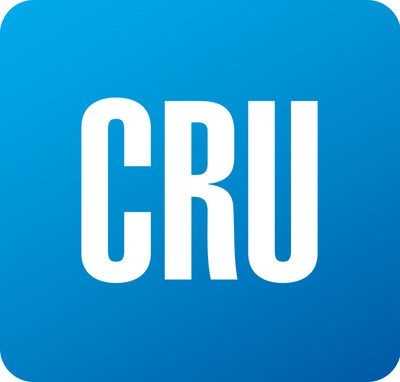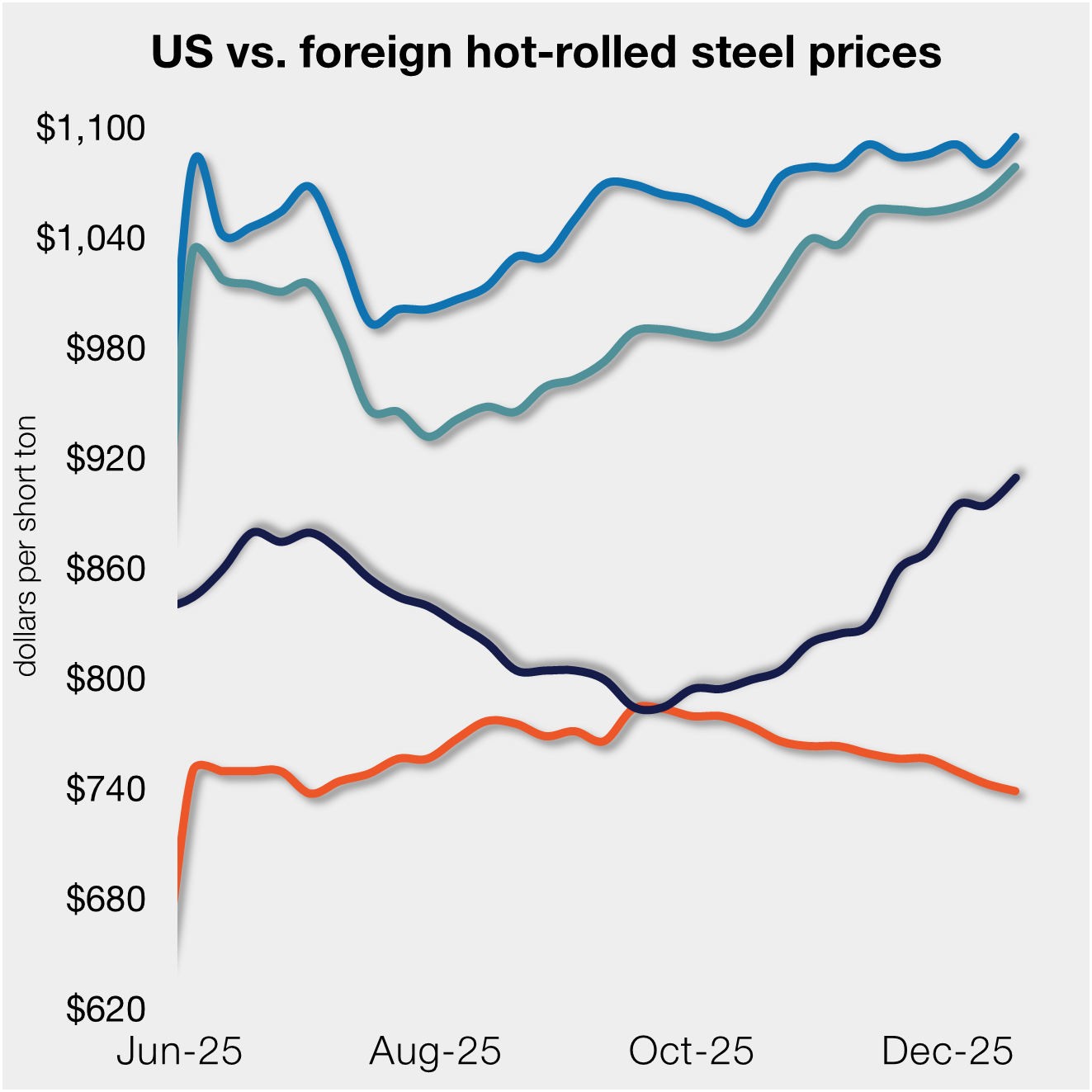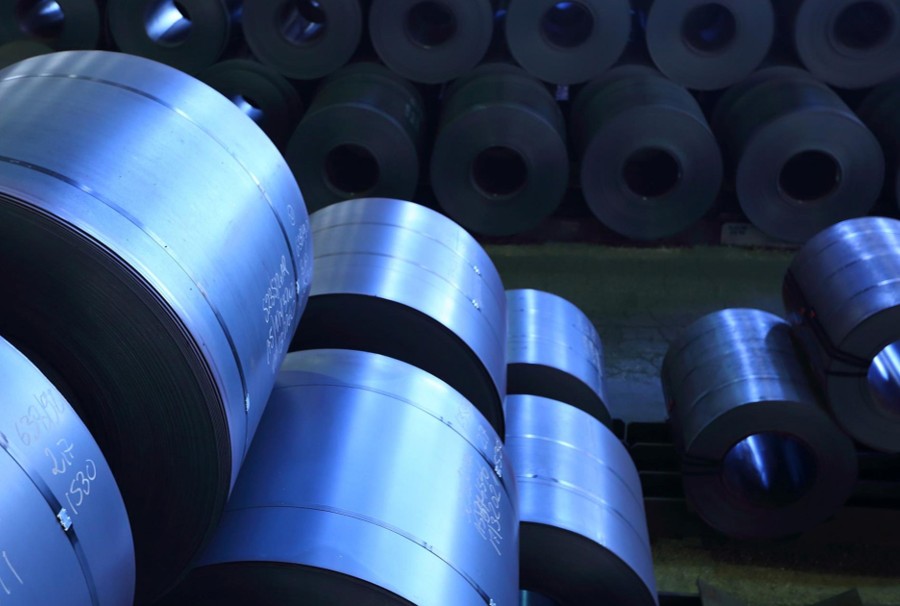Market Data

September 30, 2018
CRU Webinar: Favorable Outlook for Global Steel
Written by Tim Triplett
Despite moderating prices, the outlook for the U.S. steel market is generally favorable for 2019, reported Josh Spoores, CRU Principal Analyst for North America, during a CRU Webinar on Friday.
The Trump administration’s Section 232 steel tariff has limited competition from steel imports this year. Steel sheet arrivals into the U.S. are down 12 percent through August. Nevertheless, hot rolled coil (HRC) prices in the U.S. have declined by about $73 per ton, or 8 percent, from highs earlier in the year.
Service center inventories and shipments are both up over last year’s levels and are expected to remain fairly well balanced for the next three months. U.S. industrial production has peaked this year and will see a declining rate of growth through 2022. An inventory build that CRU expects next year will make apparent steel consumption rise a bit faster, even if industrial growth slows. “Overall, the forecast is positive for sheet consumption through 2022, just at a slightly lower rate than what we’ve seen,” Spoores said.
Even with the inventory build, CRU projects HRC prices will continue to moderate, forecasting an average of $746 per short ton. “We expect that trend to continue so long as Section 232 remains in place,” he said.
With prices falling, people are not buying for inventory right now or placing many import orders. If seasonal demand shifts into high gear in December/January/February, and inventories and import arrivals are insufficient for demand, “we could see a big rush of buying at some point, possibly earlier than normal,” Spoores said.
Pointing to risks to his forecast, Spoores noted that a strike at U.S. Steel and/or ArcelorMittal could be a game-changer. “We can’t rule out that a strike could happen. If it does, it will quickly lead to a supply shortage, especially if it lasts longer than a week or two,” he said.
Longer-term risks include unknowns such as the evolution of Section 232, a new NAFTA agreement, and future trade pacts with Japan and India. The midterm election could change the political dynamic to one not controlled by a single party. Combined with higher Fed interest rates and possible additional tariffs on China and the automotive sector, he said, economic growth could slow next year, and along with it steel consumption.
European Steel Market
In Europe, steel prices slowed in the second quarter but rebounded in the third and remain at relatively high levels. Steel buyers are building inventories, adding to apparent consumption, reported Mathew Watkins, CRU’s Principal Analyst for Europe.
Many of those purchases are imports, especially from Turkey. HRC imports from Turkey now represent 30-40 percent of total EU steel imports. Turkey had to look for other markets after the Trump administration doubled the tariff on U.S. imports to 50 percent in August. A large depreciation of Turkey’s lira allows them to offer more competitive prices to the export markets, Watkins noted.
The EU also has safeguard measures in place with global quotas on certain products. Those measures are due to expire in February, to be replaced with some other mechanism. There is some worry in the market that it may evolve into quotas based on countries of origin. Quotas on countries like Turkey and India could result in much lower arrival rates for steel, Watkins said.
CRU expects destocking in the fourth quarter, more pronounced than the normal seasonal pattern, as companies bought more heavily in advance of the quotas. New HDG capacity coming on stream in mills across Europe will add 7 percent to the EU’s capacity and moderate galvanized steel prices.
“We think steel prices [in Europe] will continue to fall through 2018, but the margins will remain good. We are not predicting a disaster for the European industry,” Watkins said.
South American Steel Market
Brazilian steel exports have been limited by Section 232 tariffs in the U.S. and safeguard measures in Europe. “Brazilian exports to the U.S. have been negligible, and we don’t expect them to improve this year,” said Thais Terzian, CRU Central & South American Analyst.
Conditions are looking up for Brazil’s economy and domestic steel demand. Steel sheet consumption in the country has increased by 13 percent this year, primarily on strength in the auto sector. Brazilian mills have increased steel prices twice in the third quarter, making prices their highest of the year.
Brazil has a positive economic outlook for 2019, led by continued strength in automotive and an improving construction sector. CRU forecasts 3.6 percent annual growth in steel sheet consumption over the next five years. Greater domestic consumption and trade barriers in other countries will limit export volumes.
Chinese Steel Market
CRU expects Chinese steelmaking capacity to decline next year as the government requires more widespread cuts in industrial production and more investment in environmental controls to reduce harmful air emissions. “Restricting output based on emissions in China is the new normal. Another part of supply side control is to restructure around fewer, larger steel mills outside centers of population. What that means to the rest of the world is that export volumes will be less excessive and steel margins will be more attractive. China won’t necessarily be the low cost source for steel in the future,” Watkins said.







